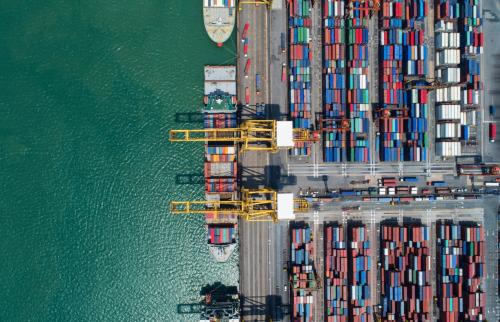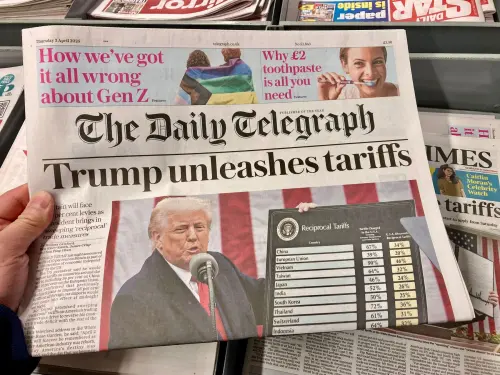An often-overlooked provision of U.S. customs law—the de minimis rule—has quietly become a major force in global trade. For nearly one hundred years, low-value imports have been allowed to enter the United States duty-free and with minimal customs documentation. This de minimis treatment, mirrored in some form by most other advanced economies, was originally designed to support efficient customs operations by avoiding the costs of fully processing small shipments that generate little revenue. In the last 35 years, however, this exemption has been recast as a tool of free trade, with its duty-free limit rising from $5 to $800 and its usage exploding alongside global e-commerce.
Now, it’s the focus of a major policy shift. President Trump’s July 30 executive order ends de minimis eligibility on August 29. The abruptness of this change is far from ideal, sowing uncertainty for parcel carriers, postal systems, businesses, and consumers while raising questions about how the new rules will be put into practice. This change comes amid a turbulent U.S. trade policy landscape, where shifting tariff rates and enforcement practices have already fueled uncertainty for global commerce.
At the center of this debate lies a deceptively simple rule that determines how—and how often—low-value goods enter the U.S. economy. Under Section 321 of the Tariff Act of 1930, the secretary of the Treasury has the discretion to waive certain duties, fees, and other taxes on certain low-value imports. Originally, low-value meant $1 or less, reflecting the rule’s narrow purpose: to ease administrative burdens by exempting shipments too small to justify the cost of collection. But as global trade and e-commerce expanded, Congress raised the threshold—most notably to $800 in 2015—transforming the rule into a conduit for direct-to-consumer sales to U.S. consumers (Figure 1). However, retailers increasingly structured their fulfillment strategies to stay below the limit as the threshold rose. In reflection of this, Section 321 import volumes have surged, growing from fewer than 125 million entries in 2014 to more than 1.3 billion in 2024 (Figure 2).
At its core, the de minimis rule reflects a balancing act between revenue collection, administrative efficiency, and horizontal equity. For low-value packages, exempting duties and documentation can reduce costs for both governments and businesses. But the rule now raises deeper questions about fairness and tax neutrality. Two sellers, one domestic and one foreign, can offer the same product but face vastly different tax and regulatory obligations. Domestic retailers must collect and remit sales taxes and comply with consumer protection laws, while foreign sellers often bypass these requirements under de minimis. This uneven treatment distorts competition and undermines the integrity of the tax system. Furthermore, recent research suggests that the benefits of de minimis are not evenly distributed, with consumption in lower-income households relying on it more heavily.
As its scope has expanded, the de minimis rule has also come to blur the boundaries between tax administration and trade policy. What began as a narrow exemption for low-value, low-revenue imports now affects how the U.S. enforces trade protections and manages cross-border commerce. Rising volumes of de minimis shipments, which face minimal tracking, have complicated oversight of tariff-rate quotas, country-of-origin rules, and other mechanisms designed to support domestic industries. At the same time, the rule has influenced how retailers structure cross-border logistics to minimize cost and regulatory exposure. In this way, a modest tax provision has evolved into a trade policy lever, prompting growing concern among lawmakers and trade officials. These concerns also highlight the need for more modern tracking systems that can both enforce compliance and give agencies the data they need to keep unsafe or ineligible products out of the U.S. market.
Recent developments under both the Biden and Trump administrations reflect these growing bipartisan concerns. In September, 2024, the Biden administration announced executive actions to restrict duty-free treatment for goods covered by Section 301, 201, and 232 tariffs—tariffs designed to counter unfair trade practices, especially those involving China. The Trump administration nullified these orders and took a more sweeping approach, signing an executive order fully suspending the de minimis exemption. Under this order, all low-value shipments are subject to duties, regardless of origin or transport method. In response, U.S. Customs and Border Protection introduced new tariff methodologies for international mail, including flat-rate duties during the transition period. These flat fees can be relatively expensive: U.K. exporters, for example, may now face a charge of $80 per package, even if the item inside is worth a fraction of the de minimis limit.
These changes have triggered significant reactions from international postal services and the business community. Many major posts in Europe and Asia, including Royal Mail (United Kingdom), DHL (Germany), La Poste (France), Australia Post, India Post, and Japan Post have suspended or restricted U.S.-bound parcel services. These decisions reflect widespread uncertainty about the new customs procedures and a lack of infrastructure to meet the updated reporting and duty collection requirements. In parallel, several e-commerce platforms, logistics providers, and small businesses have temporarily halted U.S. sales or warned sellers of potential disruptions, again citing complexity and cost of compliance under the revised framework.
Fixing de minimis makes sense—scrapping a nearly century-old policy in less than a month does not. The recent executive order fully eliminating de minimis eligibility highlights the risks of abrupt policy changes in a global ecosystem of deeply entrenched supply chains and administrative processes. While the $800 de minimis threshold has stretched the exemption beyond its original purpose and exposed legitimate concerns about fairness, enforcement, and scope, reducing the threshold to zero in such a short timeframe has already proven to be highly disruptive. A more durable solution lies somewhere in the middle: narrowing and modernizing the rule to reflect today’s trade environment, while preserving the efficiency benefits that motivated its creation. Thoughtful reform will require coordination across agencies, trading partners, and platforms to build a system that is equitable, enforceable, and resilient in a rapidly evolving global economy.
The Brookings Institution is committed to quality, independence, and impact.
We are supported by a diverse array of funders. In line with our values and policies, each Brookings publication represents the sole views of its author(s).





Commentary
Small parcels, big problems: Modernizing de minimis in a global economy
August 28, 2025